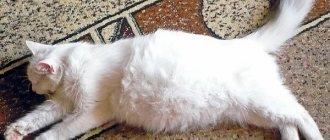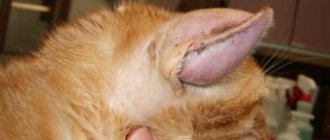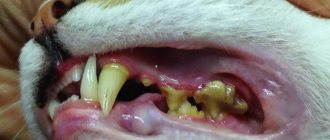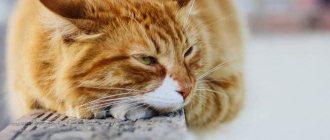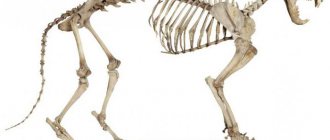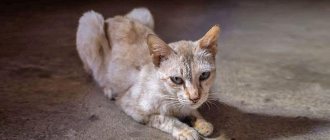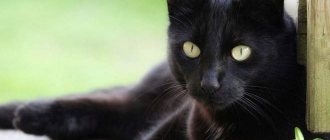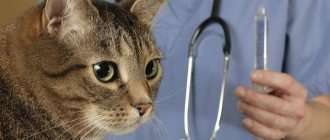Causes Clinical signs Treatment Gingivitis
is an inflammatory process of periodontal gums, which distinguishes it from ordinary age-related dental diseases.
In most cases, gingivitis progresses to periodontitis.
, causing inflammation of the gums, periodontal ligaments and alveolar bones (all of which make up the periodontium). Periodontitis is the main cause of premature tooth loss and gum disease, which causes pain and deteriorates your cat's health.
A significant number of cats with periodontitis are prone to chronic kidney disease due to the constant presence of active bacterial antigens that are absorbed into the blood.
Periodontitis can also lead to pharynx inflammation, which results in inflammation and infection of the entire back of the mouth, including the tonsils, pharynx (pharynx), and sometimes the larynx, leading to pain, loss of appetite, and significant weight loss in the animal.
The disease appears to be genetic, and predisposition to it is more common in some purebred cat breeds, including: British, Siamese, Burmese, Bengal and Abyssinian. Periodontitis begins to appear between 12 and 18 months of age and usually progresses despite treatment. Tooth loss usually begins after the age of 2 years. There are two types of periodontitis in cats: absorptive damage (shrinkage of tooth roots) and stomatitis (inflammation of the mouth).
Periodontal disease or periodontitis?
Most often, in older individuals, tartar and severe inflammation of the gums are found. Teeth become loose and fall out. The diagnosis in the chart with the same clinical picture may sound different: periodontal disease or periodontitis. Confusion with terms among veterinarians is a common phenomenon, but the essence of the problem does not change. Periodontitis involves inflammation of the tissues surrounding the tooth and is the most common. Periodontal disease is a non-inflammatory disease of the same structures, in which the jaw bone and gums are resorbed. It is rare, and not in cats, but in small decorative dogs. At the same time, the diagnosis “periodontal disease” sounds more familiar and is used en masse – by both doctors and owners.
Stages of disease development and their symptoms
Like many diseases in veterinary medicine, periodontal disease has a gradual development of clinical manifestations. There are 4 stages in total:
- Stage 1 – the presence of only clinical manifestations. The X-ray picture of the jaw and teeth is within normal limits. In this case, the cat exhibits clinical manifestations. The gums show severe swelling and redness. When examining the teeth, tartar is detected (accumulated plaque from a long absence or improper sanitization of the cat’s mouth). Due to the active proliferation of bacterial flora, an extremely unpleasant or even putrid odor will emanate from the pet’s mouth.
Reference!
According to modern ideas of veterinarians, at the first stage of the development of periodontal disease, a diagnosis of “gingivitis” should be made, since it is impossible to differentiate these 2 conditions based on clinical manifestations.
- Stage 2 – the appearance of changes in the x-ray of the cat’s jaw. It becomes clearly visible that the amount of bone tissue has decreased by ¼ part (25%) of the required amount.
- Stage 3. Dystrophy reaches the periodontium. The volume of bone tissue is already reduced by ½ of normal. The clinical picture is also accompanied by severe bleeding of the gums, which can be easily provoked even by a light touch to the pathological gum.
- Stage 4. All pathological processes are accompanied by a purulent secondary infection. Purulent foci appear not only on the gums themselves, but throughout the animal’s entire oral cavity. The alveolar processes of teeth are subject to severe destruction. The cat's teeth are very loose and can fall out spontaneously.
Important!
Since cats are extremely patient animals, in the first stages of the development of the disease, it is very rare for owners to bring the animal to the clinic. However, in the final stages, the disease is much more difficult to treat and is much more painful for the cat to tolerate. It follows from this that you need to take care of your pet’s oral cavity.
Signs
Features indicating dental problems in cats:
- Bad breath. One of the main reasons for visiting a veterinarian. The smell from the mouth becomes unbearable, putrid in nature, and can be felt from afar (when the animal enters the room).
- Decreased appetite. The cat wants to eat, but cannot. Refuses the once-favorite “crackers”, preferring soft food.
- Strange behavior. Owners notice how the pet shakes its head, rubs its muzzle with its paw, as if trying to get something out of its mouth. Sometimes you can clearly hear teeth grinding. The cat slurps when chewing. After eating, the lower jaw may tremble.
- Constant discharge from the mouth. A sick animal will drool profusely. Blood or pus may occasionally leak from the mouth. The fur on the chin is wet all the time, the skin becomes inflamed.
- Tartar and gum inflammation. If the cat is calm, you can move the upper lip and look into the mouth without opening its mouth. It is easy to notice yellow-brown tartar - massive hard deposits that sometimes completely cover the tooth itself. The gums are bright red or bluish in color and bleed. When pressed, a pus-like gray mass may come out from under it.
All these are external signs, whereas with periodontitis, not only the gums are inflamed, but also the deep tissues around the tooth root, the dental alveolus. The jaw bone may begin to rot (osteomyelitis). The teeth themselves become loose, but since they have 2-3 long roots, they do not fall out for a long time.
Symptoms of periodontal disease in cats
Periodontal disease develops quickly and silently, so it is important to recognize its early symptoms so that I diagnose early . Remember to check your cat's mouth periodically and don't hesitate to go to the vet immediately if you notice anything unusual.
Clinical signs of feline periodontitis:
- Halitosis (bad breath)
- Bleeding and redness of the gums.
- Excessive drooling (sometimes accompanied by blood)
- Difficulty chewing (usually causes loss of appetite)
- A constant urge to touch or scratch the mouth
- Swelling of the mouth and face
- Runny nose.
If not treated promptly, periodontitis produces gum recession . This can compromise the nerves and cause tooth loss. If the bacteria continues to develop and enters the animal's bloodstream, it can affect the heart, liver and kidneys. This can lead to serious infections and possible failure of these organs. When periodontal disease progresses sufficiently, it can lead to a serious medical situation and, as a result of these complications, can be fatal. This is why it requires veterinary attention to assess the stage of progression and take appropriate treatment...
Remember that teeth fall out in cats and the effects of periodontal disease in cats This can compromise your well-being and seriously affect your lifestyle. Seek advice from your veterinarian, especially if you notice more than one of these symptoms combined.
Causes of periodontal disease
One animal may have several reasons for its dental problems.
Lack of oral hygiene
Simply put, the cat does not brush its teeth. Over the course of life, teeth become increasingly covered with soft plaque. Plaque is 80% a bacterial colony. The remaining 20% is the epithelium of the oral cavity, saliva, and food particles. When saturated with calcium salts, plaque turns into tartar - a hard brown mass that cannot be removed with any brush.
The waste products of bacteria trigger a strong inflammatory process in the gums (gingivitis). The gums gradually “dissolve”, move away, and pockets and subgingival tartar form. Periodontal pockets are already a sign of destruction of the jaw bone around the tooth.
The older the cat, the greater the likelihood of developing periodontitis.
Infectious diseases
Inflammation of the gums and mucous membranes of the oral cavity (gingivostomatitis) is sometimes caused by viral diseases of cats:
- immunodeficiency (FIV) and leukemia (FeLV);
- calicivirus;
- rhinotracheitis (herpes virus).
If left untreated, gingivitis gradually progresses to periodontitis.
Non-communicable systemic diseases
- Diabetes. Diabetes inhibits the healing of any tissue, including those destroyed by infection. Decreased immunity in diabetic cats provokes increased proliferation of bacteria in the oral cavity.
- Kidney failure. Toxic products of protein metabolism are not excreted by the kidneys and begin to be released in the form of ammonia through the mucous membranes, corroding them. In older cats, you can see not only severe inflammation of the gums, but also ulcers on the tongue and cheeks.
- Irregularity of teeth. It is found in certain breeds - Persians, Exotics, British. Flat-faced (brachiocephalic) cats have a jaw that is too short to accommodate the natural number of teeth. As a result, the teeth are crowded, crooked and at random. They cannot be cleaned naturally and quickly become overgrown with tartar. Teeth can grow unnaturally for other reasons: jaw fracture, malocclusion (overshot, undershot).
- Genetic predisposition. Some cats can live 15-20 years without serious dental problems. In others, massive tartar and loss of molars are observed as early as 8-12 years of age. When this cannot be attributed to other factors, it is obvious: dental and oral health can be inherited.
Improper feeding
Eating only soft foods does not put stress on the teeth when chewing. In animals, teeth must work, this strengthens the ligament of the tooth and gum tissue. Wet canned food or cereal accumulates on teeth, accelerating the development of tartar. Soft food does not clean teeth mechanically, as happens when chewing cartilage or dry food granules. The composition of the feed itself is also important.
How to prevent a cat from developing pathology?
- You should monitor your cat's oral cavity. You need to purchase a toothbrush and toothpaste for your cat from a veterinary pharmacy and brush his teeth regularly. Yes, he may not like it (even, most likely, this is exactly what will happen), but he will clearly like injecting antibiotics and recovering from anesthesia less.
- It is important to monitor your pet's diet. If you feed dry food, it should be premium food, as it contains substances that help prevent the formation of tartar. At the same time, cheap food, on the contrary, contains many substances that contribute to the formation of stones not only on the teeth, but also in other organs (kidneys, gall bladder). Also, premium food contains a sufficiently balanced amount of nutrients, vitamins and minerals, which has a beneficial effect on the cat’s overall health.
Attention!
Premium food must be purchased only in specialized veterinary pharmacies!
- Treat injuries and inflammatory diseases of the oral cavity in a timely manner.
Periodontal disease is a terrible disease that leads to disruption of the life and well-being of a pet. However, this is quite easy to avoid. Simply paying enough attention to a purring family member is enough. Then your cat will make you happy every day, because a healthy cat is a happy cat!
Diagnostics
A complete dental examination, including x-rays of the jaws, is carried out only under general anesthesia. In this regard, doctors prescribe examinations not only to find out and eliminate the cause of periodontal disease, but also to assess the risk of anesthesia for the patient.
At the initial appointment
- Detailed clinical and biochemical blood test (after a 10-12-hour fasting diet).
- Oral rinsing for rhinotracheitis and calicivirosis.
- Blood test for immunodeficiency virus and leukemia.
Before giving anesthesia
- Ultrasound examination of the heart (ECHO-cardiogram).
- If necessary, other studies in which the anesthesiologist sees a need: x-ray of the lungs, blood clotting test.
Examination under sedation
The dentist examines the entire oral cavity. First, dental plaque is removed with an ultrasonic scaler. After this, using a thin probe, the depth of the pockets around each tooth is determined, and the degree of recession (exposure of roots) or gum growth is assessed. Ulcers are noted on the oral mucosa (most often these are areas in contact with massive tartar). If neoplasms are noticed, a piece of tissue should be taken for analysis.
It is necessary to conduct intraoral radiography, which allows you to clearly see the condition of the roots of the teeth and the degree of destruction of the jaw bone. X-rays can detect jaw tumors or abscesses.
After diagnosis, the doctor draws up a treatment plan. Often, examination, photographs and therapeutic procedures can be done under one anesthesia.
Diagnostic procedures
Timely diagnosis of the disease and prompt treatment can reduce the risk of damage to a minimum. At the first symptoms, the animal must be taken to a veterinary clinic for a full examination by a qualified specialist. Diagnostic procedures begin with a complete examination of the oral cavity, assessing the spread of inflammatory processes. In this case, the veterinarian must take into account the age of the cat, since some symptoms may occur due to age-related degeneration of the gum pockets and alveolar processes.
A more accurate diagnosis and determination of the stage of the disease will allow additional examination using X-rays. Images of the jaw will show pathological changes in its bone structure and abscess cavities. Ordinary laboratory blood sampling for general and biochemical analysis should not be ignored.
Treatment
Sanitation of the oral cavity
Teeth cleaning
Treatment of periodontitis is impossible without thorough removal of tartar above and below the gum. Use a scaler with suitable tips. The oral cavity is washed generously with chlorhexidine.
Tooth extraction
After the teeth are freed from stone, those that cannot be saved are removed. In doubtful cases, rely on X-ray data.
It happens that to cure a cat it is necessary to remove all the molars, except for the fangs (occasionally, including the fangs). It is very important to remove the teeth by the roots, otherwise the inflammation will not be overcome. X-rays help detect the roots of long-lost teeth, where there is no visible crown, covered with inflamed gums.
After total extraction of teeth, an x-ray is taken again, the gums are cleaned and sutured with absorbable material.
Teeth polishing
If the doctor decides to save some of the teeth, then after thoroughly cleaning the surface, they must be polished. This makes it harder for soft plaque to stick, slowing down the re-formation of tartar.
Drug treatment
After sanitation of the oral cavity, a short course of painkillers and anti-inflammatory drugs (Loxicom suspension, tablets or ketofen injections) is prescribed.
Antibacterial agents are used to fight infection. Local medications are very difficult to use at home; it is a lot of stress for the cat and its owners. Sometimes doctors prescribe irrigation of the gums with an antiseptic (Miramistin, chlorhexidine, Iodinol) and local gels (Cholisal, Metrogil-denta).
A broad-spectrum systemic antibiotic is more often used if the process is advanced. The first choice drugs are amoxiclav in combination with clavulonic acid (Sinulox) and a special antibiotic for the oral cavity - Stomorgyl.
The cat is fed soft food for several days after surgery. Then, even with total tooth extraction, the pet will be able to eat dry food. If only part of the teeth have been removed, it is necessary to maintain oral hygiene at home in the future.
It is general anesthesia and the prospect of removing a large number of teeth that sometimes frighten the owner. Such treatment, if the information is presented incorrectly, looks repulsive. Sometimes an unqualified specialist himself does not undertake the operation, hiding behind the fact that “the cat is old and will not tolerate anesthesia” and other excuses.
It is important to understand that it is impossible to cure periodontal disease without proper cleaning of the oral cavity. You can smear bleeding gums with Metrogyl over tartar for years, take one course of antibiotics after another, and in desperation decide to take a course of prednisolone. Only this is not a treatment, but its appearance, to calm one’s own conscience. Without removing tartar, and more often the teeth themselves, all these actions are meaningless and even harmful: they exhaust the patience and wallet of the owner, and cause stress to the animal.
Rules for brushing teeth
The cat, like its owner, should have its own toothbrush and toothpaste. The use of human accessories is prohibited.
What you need for cleaning:
- A special toothbrush or finger cap.
- Toothpaste for animals.
- Cotton swabs can be used to replace a brush, but they are less convenient.
When choosing a toothbrush, pay attention to the composition of the bristles. It is better if they are made from natural raw materials. They should be soft so as not to injure the gums. The working surface of the brush should not be too large. It is important that it moves freely in the cat paste.
Hygiene procedures begin only when the pet is in a good mood and calm. The animal must be well-fed and healthy. During illness, brushing your teeth is postponed. It begins with affection and stroking, kind words. It is important that the cat willingly sits in your arms.
The procedure is carried out once every ten days. For representatives of some breeds (British Shorthair, Persian) more often. The algorithm of actions is as follows:
- The animal is placed on your knees or on a table, turning its muzzle towards you.
- If the cat shows dissatisfaction and tries to escape, he is wrapped in a terry towel. This must be done gently, without causing pain to the pet.
- Gently spread the cat's jaws. To do this, press between the teeth on both sides with the thumb and forefinger. The cat will reflexively open its mouth.
- It is forbidden to pull the lower jaw downwards.
- The teeth are brushed with gentle massage movements, it is important not to injure the gums.
- The brush is moved according to the same principle as when brushing your own teeth. It is advanced from the gum to the upper surface of the tooth.
- Cleaning begins with the molars, then gradually moves to the front teeth.
It is important not to delay the process, but to do everything quickly and accurately. If you are unsure of your own abilities, consult a veterinarian. He will conduct the first cleaning and give useful recommendations.
The sooner you start teaching your kitten about oral hygiene, the better. The process should not be rushed; it should resemble a game and not cause discomfort to the pet. There are no strict rules; each cat owner chooses methods taking into account the cat’s character.
Approximate procedure:
- The index finger of the right hand is wrapped in gauze or a bandage and soaked in meat broth.
- A well-fed and calm kitten is picked up, stroked, and spoken to affectionately.
- The wrapped finger is allowed to be sniffed by the kitten, and it is allowed to bite it lightly. It is important not to allow your pet to bite into it with its teeth.
- Every day, little by little, move your finger into the cat’s mouth, scratching the gums and teeth with it.
- After the animal gets used to the manipulation, the meat broth is replaced with toothpaste for cats.
Instead of your finger, you can immediately use a toothbrush for cats. It is important to take your time, be patient and be gentle with your pet. Even small “achievements” during the learning process are rewarded in a way familiar to the kitten.
The danger of periodontitis
Having doubts about the tactics of treating a cat’s rotten teeth, the owner wonders whether it needs to be treated. After all, the cat lived with such teeth for many years, does not complain, and eats slowly. Arguments in favor of oral sanitation.
Eliminating the source of infection
The huge mass of bacteria in the oral cavity during periodontitis is a source of chronic infection. This disrupts the functioning of the immune system, depleting it, aggravates the course of diabetes mellitus and kidney failure, and changes the blood formula.
Frequent inflammation that begins in the oral cavity spreads further, causing laryngitis and pharyngitis. It is painful for the cat to swallow, and exhaustion and dehydration quickly sets in. The respiratory tract is contaminated with bacteria, which provokes diseases of the bronchi and lungs. Periodontitis causes gastritis (inflammation of the stomach), dysbiosis of the digestive tract.
Normalization of nutrition
Periodontitis in cats often leads to loss of appetite. Owners often worry about how their pet will eat without teeth. The doctor should explain that eating with healthy, strong, toothless gums is much easier than with rotten, loose, unpaired teeth.
After effective treatment of periodontitis, it is possible to improve the nutrition and functioning of the digestive tract, prolonging the life of your furry pet.
Relief from pain
It is difficult to overestimate the effect of the procedure as the animal’s life without constant pain. Chronic suffering, aggravated by eating or licking, affects the character of the cat - it becomes nervous or aggressive.
Many owners are surprised to note that their pet changes before their eyes after being cured of periodontitis. Not every elderly cat will become affectionate and calm after oral cavity sanitation, because a lot depends on temperament. But everyone deserves to have a life that is not just long, but also comfortable.
There is an opinion that teeth and gums rot slowly and do not hurt. You should not believe this point of view. The misconception is due to the fact that the degree of pain in animals is more difficult to assess than in people - they do not speak.
Varieties
Caries is divided into several groups:
- The first stage, when the disease is expressed by darkening of the tooth enamel, is called spotted caries.
- Superficial caries. Black indentations appear on the enamel.
- Average type of caries. This type affects the dentin structure in addition to the enamel.
- Deep caries. The damage reaches the pulp.
To protect your pet from an unpleasant illness, choose the right food for your cat, which will be rich in all the necessary vitamins and substances. Those cats whose genetics are prone to plaque should be fed with special veterinary food.
Prevention
Preventing periodontal disease is as difficult as curing it.
This is due to the fact that cats have difficulty tolerating any procedures, and some factors of gum inflammation cannot be eliminated. The best prevention is an annual examination by a specialist. Then the cat will receive treatment at the stage of mild gum inflammation - gingivitis, and it will not reach periodontal inflammation. At home they provide:
Feeding
Solid or fibrous foods in a cat's diet mechanically clean the surface of the teeth. There are special foods to reduce the formation of plaque. If the animal is prone to this, it is worth practicing such a diet on an ongoing basis. This is not 100% preventive, but it can help. Specially shaped croquettes encourage the cat to chew them, and special additives bind calcium in saliva, preventing it from settling on the teeth in the form of stone:
- Royal Canin Dental;
- ProPlan Dental Plus;
- Hill's Feline Adult Oral Care.
If the owner is against industrial food, you can give the cat special treats for oral hygiene. In addition, there are special additives to food and water:
- Beaphar Mouth Wash;
- Cliny oral liquid;
- Dental Fresh;
- ProDenPlaqueOff.
Oral hygiene
Teeth cleaning
Ideally, you should brush your cat's teeth. If not every day, then at least 3 times a week. To do this, use veterinary pastes and a silicone finger brush. Wayward animals may strongly resist the procedure.
General characteristics of the disease
In veterinary medicine, periodontal disease is usually understood as a disease that is caused by pathogenic microbes that actively multiply in the animal’s mouth. Their pathogenic activity leads to damage to the periodontium (ligamentous apparatus of the teeth). When a pet eats food, food particles inevitably remain on its teeth, which creates ideal conditions for the appearance of colonies of harmful microorganisms. Over time, they, together with pieces of food, cover the surface of the teeth with a yellowish coating.
With each meal, plaque becomes more and more, and therefore there is little space for it directly on the tooth, and it begins to affect the gums. Its damage and accompanying inflammation is called periodontal disease by specialists. Owners should understand that this problem should never be ignored, since in its advanced form the disease can cause deformation of the cat’s jaw, which can lead to tooth loss.

